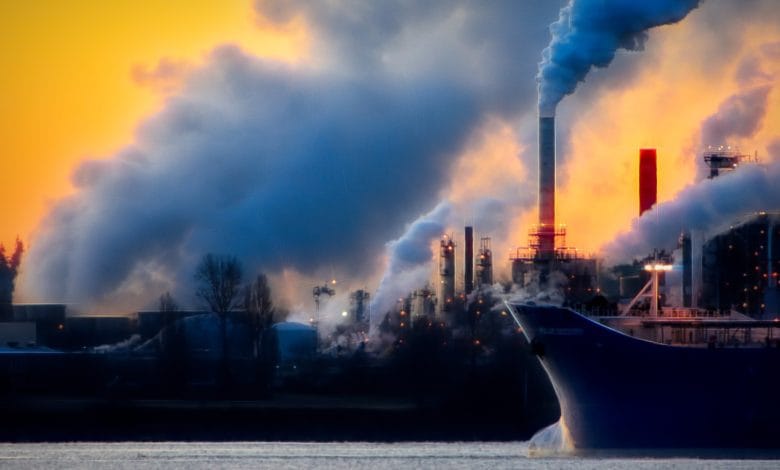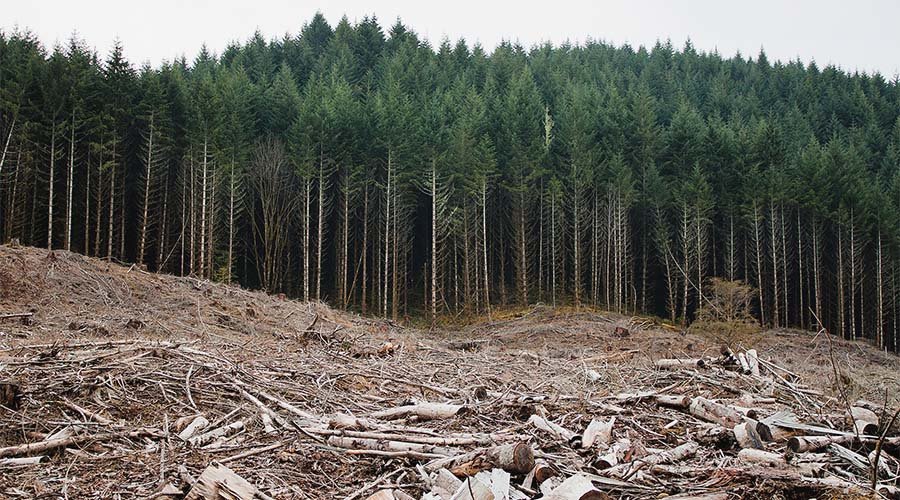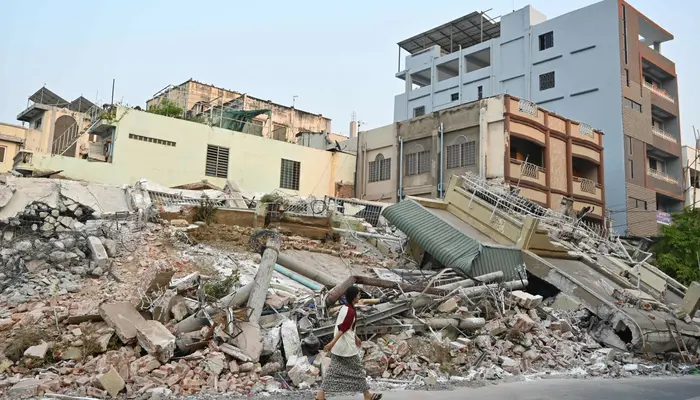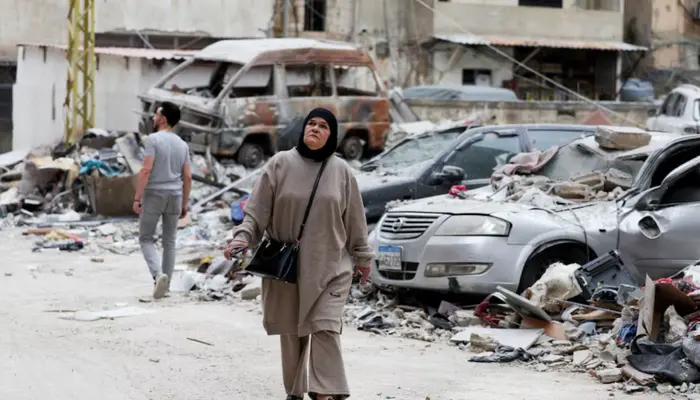
What is global climate change or global warming?

We often use Climate change and global warming interchangeably.
Climate is a general weather condition of a place that persists for several years. In the United States, for instance,, Maine’s climate is snowy and cold in winter while Pakistan has all four seasons year-round.
Climate change is a vital variation that we humans are subject to and its importance on the globe can’t be denied.
Over the past several decades we have seen a significant difference in climate conditions in every part of the world. Scientists believe that human activity, following the industrial revolution, had a remarkable impact on global climate change.
Ever since the mid-twentieth century and as a result of increased industrial activities the world is becoming warmer in an unprecedented way over the decades or so.
However, according to scientists the ongoing warming trends are particularly noteworthy and we have been able to witness the overarching issue with the help of satellites and new technologies. The scientist could gather information regarding the earth and how its climate is liable to change. They gathered invaluable information that indicated a huge climate change that took place over the decades now.
NASA’s research showed that the carbon dioxide and the release of other harmful gases demonstrated in the mid-19th century have led to the climate change phenomenon. Greenhouse gases in this regard have also played a key role in heating the planet.
Wondering how greenhouses are contributing to global warming?
This is because greenhouses tend to trap the heat that is supposed to be radiating towards space from Earth. There are several gases in the atmosphere that resemble glass in a greenhouse, which lets the sunlight pass into the ‘greenhouse,’ but that prevents Earth’s heat from discarding into space.
The current rate of warming is roughly ten times faster than the average rate of ice-age recovery, according to this ancient, or paleoclimate, data. During the last Ice Age, carbon dioxide from human activities rose more than 250 times more than it did from natural causes.
Causes of global warming
Global warming is an element of climate change that refers to the increase of global temperatures over time. Increased levels of greenhouse gases in the environment, mostly from human activity such as the combustion of fossil fuels, deforestation, and farming, cause it.
Burning fossil fuels
We emit CO2 pollutants into the environment as we burn fossil fuels like coal, oil, and gas to produce electricity to run our vehicles.
According to wwf.org.au in contrast to the rest of the planet, Australia is contributing to emitting CO2 polluters. Developed countries’ CO2 emissions per person are approximately way too greater than developing countries and more than four times that of the rest of the planet.
Electricity production is the major culprit causing carbon pollution in Australia as 73% of their electricity is generated from burning coal while 13% of electricity comes from burning gas. The remaining 14% depend on renewable energy sources like solar, hydro, and wind
Cutting Trees

Plants and trees play a significant part in keeping the climate cold as they absorb carbon dioxide from the air and disseminate oxygen which is why we are able to get some fresh air. Forests and Greenlands act as a pacifier to keep global warming to 1.5°C.
But humans are clearing vast areas of trees around the world for several purposes such as farming, urban and infrastructure development or to produce products.
When the Trees are cut and burnt the carbon that they have been storing is released back into the air as CO2 resulting in global warming.
Forest degradation and deforestation cause up to one-fifth of global greenhouse gas pollution.
Agriculture & Farming
Agriculture and farming also cause global warming since animals, especially sheep and cattle, generate methane that is a greenhouse gas. This is why a large amount of methane is produced which is, according to several studies, a big contributor to global warming.
However, there is some fertilizers release nitrous oxide, which is another greenhouse gas that also contributes.
Are there any organizations working to prevent global climate change?
- National Climate Data Center (NCDC)
- World Meteorological Organization
- Pew Center on Global Climate Change
- National Oceanic and Atmospheric Administration (NOAA)
- International Geosphere-Biosphere Programme (IGBP)
- United Nations Framework Convention on Climate Change (UNFCCC)
- World Meteorological Organization
- Climate Alliance
- Climate Group
- World Wildlife Fund: WWF
These organizations have a mission to create a world where people and nature thrive together.
They are urging political and giant business leaders to take bold steps to deal with the global climate change crisis. For that, we ought to make the transition into 100% renewable energy.
10 Myths about Global Climate Change
With the global crisis gaining momentum in times where there is so much access to misinformation. That’s why we’ve attempted to refute some of the most popular fibs about global warming so you know the truth!
The Earth’s Climate has Always Changed
It is true that over the period of 4.5 billion years of earth’s history the climate has changed but the kind of change we are seeing is not due to natural cycles of cooling and warming. What should be changing in hundreds and thousands of years, is changing in a matter of decades, which is insane!
This is how fast warming is taking place much of this is a result of the industrial revolution. When scientists point out climate change, they are actually referring to anthropogenic (man-made) climate change.
Carbon Dioxide is a problem
No! The CO2 is not a problem itself since it’s a part of the natural global ecosystem. The problem is the quantity of CO2 that’s being produced. Humans are responsible for this level of carbon dioxide in the atmosphere for 800,000 years.
Global Warming is Not Real
The average surface temperature of the Planet is increasing as a result of global warming. Hot waves and droughts are becoming more frequent, and our natural climate patterns are evolving as a result. Extreme weather conditions are becoming more frequent and extreme as a result of these changes. Hurricanes and hurricanes, for example, are getting more powerful, traveling slowly, and taking longer to travel.
As a result of climate change, the UK and Ireland are expected to see more rain and wind, while New York is likely to see more snow.
Climate Change is a Future Issue
Climate change is not something that we are ‘going’ to face in the future but it is what we are facing currently. By saying that this is a future problem then we are just pushing the burden onto future generations. Leading climate scientists have cautioned that we only have 12 years to prevent global warming to 1.5 degrees Celsius to prevent climate catastrophe.
We’re already seeing the detrimental effects of global climate change.
It will affect food supplies, migration, cause conflicts, give rise to diseases and global instability if we don’t act now.
Man-made climate change is the biggest environmental crisis of all time. It is threatening the future of our generations and the planet. We’re the last generation that can save the future of our kids.
Renewable Energy is only a Money-Making Scheme
Renewable energy is widely believed to be costly, but this is clearly not true! Solar power and onshore wind are the most cost-effective ways to generate electricity, ensuring the energy they generate is less costly than that generated by nuclear, coal, or fossil fuels.
The cost of renewables has fallen faster than anyone could have predicted. And yet much to the scientists’ chagrin, the governments are wasting an eye-watering amount of money supporting dirty fossil fuels.
Polar Bear Are Increasing

This is not true. Polar bears are the ones most affected by Climate change. The Arctic is warming insanely twice as fast as the entire world, resulting in sea ice melting. This poses a challenge to female polar bears to get onto land to build their dens, and to feed their cubs during hot weather.
Polar bears also are left with less food than they used to have. Their populations are predicted to reduce by 30% by the middle of this century.
Renewable Energy Work When Not Windy And Cloud
The industry is developing new strategies at the expense of a healthy environment for the sake of storing electricity and controlling demand at peak times. It means that renewable energy sources can be relied on even when the sun isn’t shining or the wind isn’t blowing a gale.
All Animals and plants can Adapt To Climate Change
This isn’t a myth in its entirety. But let’s be clear, some plants and animals have the ability to adapt but not all of them.
Plants, livestock, and birds facing a huge challenge of climate change.
They are left with two choices for survival:
- migrate
- adapt
There are some animals who have started to adapt to new changes in the global climate.
Given the rate of climate change, many animals are finding it difficult to adapt fast enough to keep up with their changing surroundings. Moving becomes increasingly difficult as ecosystems are eroded by highways, towns, and dams. The future does not appear to be bright for those who are unable to travel or adapt.
Well, some species are unable to adapt as much fast as the global climate is changing.
Solution: No Human no Global warming
Well, this belief is absolutely wrong. Yes, but it’s easy to fall into believing this statement because of the progress we humans are making that is causing so many global climate problems. But it doesn’t mean that getting rid of humans is the solution to a healthy global climate
There are some organizations that are working to stop the negative effects of global warming and global climate change. They are also educating people and those who belong to industries about this current issue.
China is Responsible for Global Climate Change
Because China is one of the massive emitters of greenhouse gases doesn’t mean it is the only responsible country contributing to global climate change. In spite, China is presently one of the biggest investors in renewables.
China is investing in projects that are aimed at cleaning up the air pollution and working to decrease the pollution in its major cities.
Global climate change is not a problem that only a country is involved in creating or facing, it’s something that is taking place at the global level. This is the issue we all have a fair share of creating so we all have to step up to the climate crisis. Action on it will need serious investment but has the potential to deliver huge benefits for nature and people. We all need to raise our voices and fight for our world!
Some Facts you didn’t know about global climate change
Climate change has become a major problem for many people around the world, particularly young people who believe their future is at risk because of the consequences of climate change.
In order to fight climate change, we need to understand what climate change is and what it means for the planet and for us in our everyday lives.
Knowing the truth on climate alteration will help you join in conversations about what’s going on in our world and what we need to do to avoid global warming.
Fact 1: human activity led to increasing in global temperatures since 1950
There are certain natural causes of climate change, such as volcanic eruptions, the reason that we are currently facing a climate threat is due to human activities to some degree.
Fact 2: The greenhouse effect determine Earth’s average temperature
As we talked about it above, Greenhouse gasses are the ones that collect heat in the atmosphere. When the sun shines into the atmosphere, the greenhouse gasses trap the radiation and block the heat from escaping the atmosphere. This is referred to as the greenhouse gas effect.
Without greenhouse gasses, the surface temperature on Earth will be way too cold to support life.
Nevertheless, as we introduce more greenhouse gasses to the environment by human activities, this allows more energy from the sun to get lost in the atmosphere, heat up the Earth, and spark global warming.
Greenhouse gasses entail carbon dioxide (CO2), which is normally emitted by burning fossil fuels, and methane (CH4), which is produced by livestock including cows as they eat food.
Fact 3: There is about an increase of 1° Celsius in the Global temperatures in the past century
The surface temperature on Earth has warmed by 1°C over the past 100 years. In our day-to-day lives, we may not feel any change if the temperature has risen by one degree, but this increase in temperature has had a huge effect on the earth.
The temperature continues to increase, and the last five years are, collectively, the warmest years in the entire world. At present, countries around the world are working towards the objectives set out in the Paris Agreement, which seeks to keep the global temperature increase below 2°C and, if possible, to reduce it to 1.5°C.
Fact 4: The United States is the second-largest country to produce carbon dioxide (CO2) in the atmosphere
The US is home to just 4.4% of the world’s population, and it is one of the largest emitters of greenhouse gases. If everybody in the world burned fossil fuels and behaved the way they did in the US, it will take four piles of earth to provide enough food for all of us.
Ireland’s greenhouse gas emissions are the third-highest per capita in the European Union, largely due to agriculture, shipping, electricity, and domestic emissions.
Fact 5: Arctic sea ice and glaciers are melting
One of the most well-known effects of global warming is that sea ice and glaciers in the Arctic are melting.
In 1910, the Montana Glacier National Park in the United States was complete with nearly 150 glaciers. When the glaciers were recounted in 2017, the figure had fallen to 26.
This melting ice will cause sea-level rises which will eventually impact residents in places that depend on melting glaciers water for their drinking water.
Fact 6: The average sea level is forecast to increase between 0.5 and 1.5 meters by the end of the century
When seas begin to grow and extend and land-based ice in Greenland, portions of Antarctica, and mountain glaciers continue to melt, sea levels will increase. This would have an influence in many countries around the world, notably in low-lying areas with a high threat of extensive flooding, including parts of Ireland.
Fact 7: Rainforest degradation is a big source of carbon dioxide emissions
Trees and woods are known as carbon sinks because they absorb carbon dioxide as they grow. When humans have burnt rainforests or destroyed wildfires, large amounts of carbon dioxide are released into the atmosphere. This adds to the greenhouse effect that increases the concentration of carbon dioxide in the atmosphere and adds to global warming.
Fact 8: Coral reefs are destroyed
Half of the world’s coral reefs have died during the last 30 years.
What’s a reef?
A reef is an elevated region on the ocean floor consisting of rock, coral, or sand. If you’re a scuba diver, go to the coral reef to see the diverse sea life. A barrier reef is one that protects the island, creating a lagoon between the reef and the beach.
Human activity and higher temperatures have greatly led to coral bleaching. When the water gets too warm, the algae in the tissues of the coral flee. Algae supplies the coral with much of its nutrients, so it requires algae to thrive. When the algae leave, the coral will bleach and become white or pale, making it vulnerable to disease.
This affects the fish and other animals that call these corals their home. Between 2014 and 2017, the whitening of the Northern Great Barrier Reef, along with the effects of cyclones, destroyed about 50 per cent of its corals.
Fact 9: Our societies will find it harder to adapt and some species may go extinct
Global warming will intensify current threats and generate new risks for both human and natural systems.
Coastal regions would be exposed to rising sea levels, and certain vulnerable island nations, such as the Maldives, could vanish entirely.
A significant proportion of animals are at elevated risk of extinction due to climate change. For instance, most plants cannot naturally move where they live quickly enough to keep up with current climate change rates in most ecosystems. Most small mammals and freshwater molluscs would not be able to cope with these changes either.
What do 97% of scientists say about climate change?
Many surveys conducted in peer-reviewed research publications indicate that 97% or more of active climate scientists believe that climate-warming patterns over the last century are very likely to be attributed to human activities. In addition, several of the world’s largest scientific bodies have released official statements upholding this stance.
















